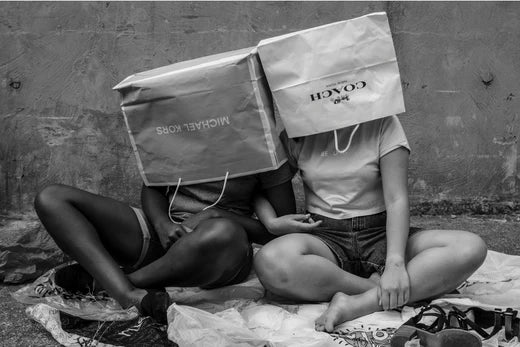
On Consumerism with Elise Yvon - Interviewed by Lucy Matthews
Elise’s underground rave consists of doctors cracking the bones of children and a mechanism built on the labour of youth. Painting a picture of a party revolving around the exploitation of those we are meant to nurture and look after the most, I was compelled to ask Elise why she had conjured up this title in regards to the exposure of a child’s fragility.
E. I had written the poem and thought of the title afterwards. Glowing robot children in a factory, it is humorous when going forth with this title. I knew that people would immediately think of something else when hearing it and I liked that satirical element.
Elise’s range as a poet was impressive, twisting the placement of children within factories during the industrial revolution into a commentary on fragility. Whilst fragility is recognised as an emotional state of being today, Elise was inclined to tap into the past and look at how the manipulation of youth can conjure up a physical fragile picture of industrial abuse.
E. During the industrial revolution children were put to work due to their small stature, yet they still got hurt instead of adults because of this. They were utilising something small but it also involves the dehumanisation of someone who isn’t grown yet into an adult. I wanted to paint a picture of the most fragile elements of society and children are hugely a part of this in the world we live in. They have contributed massively to our physical labour efforts, and continue to do so.
Using the way society has treated young people across history as poetic inspiration meant that descriptions of youth could be pushed to the extremes, guaranteeing our discomfort as readers in hearing a child’s body being manipulated in this way. It seems Elise was fully aware of her role as a poet to address the uncomfortable and take pieces of history to learn about the perceptions of those around us during that time. It was a storylike approach to a time where this had been the norm. The juxtaposition of dangerous labour carried out by youthful beings irked me, and it served as visceral ammunition for Elise, whose call out to readers at the end through the tongue teaser of a finale clicketing, clacketing fuckedy mess of clicks *see last verse*.
E. I really wanted my writing to mirror that of a machine, as it draws up so much strong imagery that really takes you there and I wanted it to feel like you were in the factory yourself. Children are still being exposed today on a huge scale in the face of consumerism, and I don’t think people realise the scale of such. I wanted this poem to face this square on. On the bigger scale, it represents maximising things that are beneficial to us, but at the same time this has always come at a price. Instead of focusing on a single child I spoke of children as a whole, this was done purposefully. Each child does have a story to tell but for this poem I wanted to use the mass grouping of manual labour to really make readers think about the act of purchasing, and how it is all built on the exposure of youth.
Elise’s poem hinted that the result of this mass purchasing comes at a price today, resulting in the permanent dislodging of fragility within childhood. This was reiterated by Elise when asked about whether the compromising of fragility results in a permanent state of brokenness.
E. The robotic children in Underground Rave are less fragile due to their robotic states, however they are still children under the surface. They now face being broken down and rusting as machines, conjuring up a new state of fragility. They are still children underneath it all. We see this today with the process of ageing but I just wanted to take it to the extremes with this and put it in a completely futuristic setting and test the boundaries of what we know about the fragile nature of children. You may be really strong but events happen which threaten your fragility, even if you are a robotic child dedicated to consumerism.
Elise’s depiction of stolen fragility reminds us as humans that there is always a higher force that can reduce us into a fragile state of being at any moment, even if you aren’t working in a factory as a robotic child forced to produce on a mass scale. It poses the question, do we try to run from this fear of the most fragile parts of ourselves being exposed, or do we accept that a peaceful existence isn’t attainable without ever being vulnerable in this way? The role of poetry in forcing us to look at fragility in this way should not go understated. Knowing that a poem describing osteopaths manipulating robotic children has the power to force us to look inwards at our relationship with fragility is the true gift of poetry within itself. It shows that even in our most fragile states, we are only one poem away from relating to an Underground Rave of partying production line robots. Fragility’s broad depiction should truly be regarded as a comfort today when we feel at our most vulnerable.


